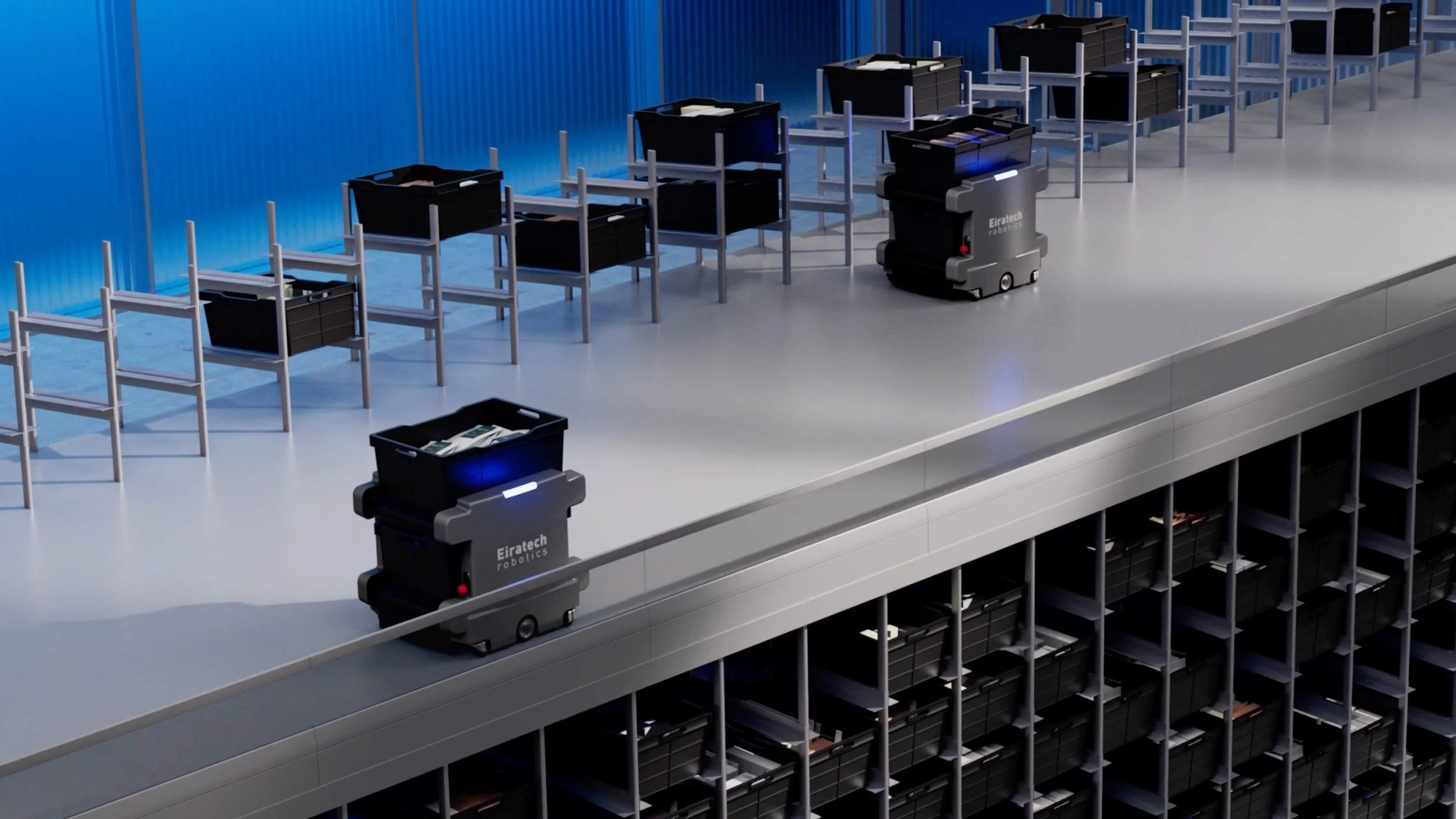From Pilot Purgatory to Scale: A TAM2+ Guide for AMRs and ASRS in Grocery
Irish warehouse robotics firm Eiratech Robotics have designed an advanced robotic e-grocery fulfilment system for grocery stores looking to automate their back-of-store operations with micro-fulfilment solutions.
Credit: Eiratech Robotics
How to turn store-level trials into national roll-outs without losing the plot
Technology adoption in grocery doesn’t fail because robots can’t move totes. It fails when programmes don’t convert perceived usefulness and ease-of-use into a credible operating rhythm that buyers trust enough to scale. That, in essence, is why augmenting TAM2 (Technology Acceptance Model 2) with very practical SAWRS (Smart Autonomous Warehouse Robotic Systems) factors—fleet reliability, serviceability, UI transparency, and phased roll-outs—speaks more directly to supermarket realities than a generic “IT system” lens.
TAM2’s core constructs still matter. Usefulness for a supermarket chain doing e-grocery fulfilment shows up as higher pick-rates, faster van loading and consistent home-delivery rounds—benefits that store leaders can feel in their staffing plans and customer complaints. Ease-of-use translates to minimal cognitive load on operators and technicians; systems that demand constant babysitting, opaque resets or off-platform workarounds degrade usefulness quickly. In practice, these drivers shape “intention to use” during a single-store trial and determine whether the programme graduates from evidence to execution.
Context matters as much as psychology. A supermarket’s trajectory to successful e-grocery fulfilment underscores two truths. First, even sophisticated incumbents have a history of pilots that don’t scale—solutions installed at a distribution centre (DC) or a handful of stores and then paused due to cost, disruption or misfit with the operating model. Second, when the business model shifts (post-demerger, post-pandemic), the appetite for automation can change fast, provided the programme design de-risks roll-out with phased deployment and clear governance. Some grocery chains move towards store-level micro-fulfilment with SAWRS, centralising data analytics but decentralising hardware, and planning staged expansion across hundreds of sites—an adoption path that spreads operational risk and keeps learning loops short.
What does this look like in the trenches? Start with an adoption narrative that store GMs can repeat: “Robots help us hit van loading targets with fewer errors and less fatigue.” Instrument the fleet with dashboards that both vendor and retailer can see, not just for curiosity but for joint decision-making: fault classes, mean time to recovery, and the top five interventions that cost hours last week. Interface hygiene matters; if SAWRS doesn’t integrate cleanly with WMS, route planners and HR shift tools, usefulness erodes in the seams.
Governance closes the credibility gap. A supermarket board is not buying robots; it’s buying availability under agreed conditions. Bake this into the roll-out plan: predictable maintenance windows, spares pools sized by real failure distributions, and a change-management cadence that the retailer’s IT and operations can actually live with. TAM2’s social influence leg reappears here—champion store managers and respected engineers become multipliers when the data reflects their lived experience of a smoother shift.
Commercially, the programmes that win are packaged, not pitched. Vendors who arrive with a store kit—hardware, orchestration software, integration adapters, and a service playbook for incident triage—shorten procurement and make scaling feel safe. E-grocery fulfilment use cases point to another lesson: phasing protects both parties. It’s better to commit to a route map (X stores per quarter, with exit ramps and improvement gates) than to fight for an all-or-nothing leap that scares finance and operations. A credible “TAM2+” story, then, isn’t academic. It’s a way to align psychology, process and governance so that trial success turns into network-wide muscle memory.
The payoff is not a one-time capex victory; it’s an estate where robots, data and people compound advantage over time. That happens when adoption is de-risked by design, not left to hope inside a pilot.
